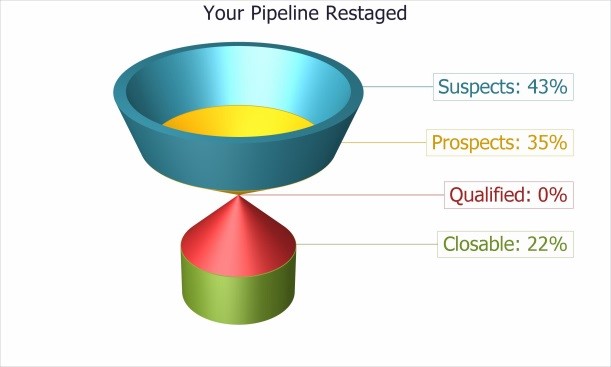Are there certain characteristics that make someone (or a salesperson) assertive? We believe so.
And if you are a prospect, you want to have honest, direct and assertive conversations with a salesperson so that they can make better, more critical decisions.

There are many contributing factors as to why someone may not be very assertive such as:
- Learned helplessness
- Having low self-esteem
- Not having a "Go-giver" mindset
- False bravado
- Living life out of balance causing a sense of desperation and a crisis management approach to work rather than a self-management approach to work.
Assertive people have certain characteristics.
- First of all, they have minimum acceptable standards for themselves and those people around them. They don’t associate with toxic people – they work with nourishing people.
- They have a goal philosophy; they have lots of goals and then they continue to pursue those goals and achieve those goals.
- They get outside the box. If you’ve seen the 9-dot exercise, you’ll know what I’m talking about. They get outside the dots- they expand their comfort zone.
- Next, they take risks and they understand that taking risks can result in failure. But, failure becomes defined as just another step towards success. They’re persistent. They find other ways to close.
- They make decisions themselves which makes it hard for them to understand why someone would want to "think it over".
- They know what they stand for and they won’t fall for anything that falls under the category of an objection or a stall.
- They control the sales process. You can ask them about next steps and assertive people can give you specific details about what happens next.
To overcome the hurdles that might trip you up as you attempt to be more assertive, you might consider the following:
- As they said in The Godfather, “It’s not personal; it’s business.” Don’t take it personally.
- Take ownership of how you feel. Nobody can make you feel the way you feel in terms of being uncomfortable. You choose to feel a certain way.
- Consider Emerson’s quote, “Do the thing and you’ll have the power.” There will be times during a sales process or sales step where you will feel the need to be assertive but you will be afraid. DO the thing… do the thing that you’re feeling and you’ll have the power.
As always, thank you and have a perfect day.


.jpg?width=1920&name=board-game-businessman-challenge-1040157%20(1).jpg)
 Figure 1
Figure 1